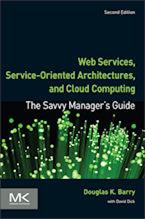Myth: ODBMSs Are Slow
The myth that ODBMSs are slow has no basis in reality. ODBMSs have always excelled at high performance on complex data. It is not unusual to see private benchmarks that show ODBMSs running anywhere from 10 to 1000 times faster than an RDBMS when accessing complex data. See complex data.
I have been able to think of two possible sources of this myth:
- Some people who have a strong background in relational modeling often, at first, have trouble designing an object model. It is sometimes quite hard to not use intersection entities and type codes that are used so often in relational models but can nearly be eliminated in object models. So, a poorly design object model has the potential of making an ODBMS run slowly.
- Some people believe ODBC stands for Object Database Connectivity. (I have seen press releases that use ODBC this way!) Well, ODBC stands for Open Database Connectivity and it does have a reputation for being slow. So, if you think ODBC refers to object databases, you could understandably have the wrong idea that ODBMSs are slow.
Don't just take my word for it, listen to what Dr. Michael Stonebraker said about object database performance at the Object/Relational Summit in August 1997. At the time, Dr. Stonebraker was the Chief Technology Officer at Informix Corporation. In this audio clip he mentions ODBMS performance with C++. Java had not as yet come on the scene. Audio clip: Stonebraker.mp3.
Context for Myth: ODBMSs Are Slow
Related Articles for Myth: ODBMSs Are Slow
Author
Douglas K Barry
Principal
You may use this material for your work or classes. Reprint Policy. Be sure to check the menu at the left for other articles available on this site.
The Savvy Manager's Guide
Douglas K Barry is also the author of a book that explains Web Services, service-oriented architecture, and Cloud Computing in an easy-to-understand, non-technical manner.
Web Services, Service-Oriented Architectures, and Cloud Computing: The Savvy Manager's Guide (Second Edition)
by Douglas K Barry with David Dick
This is a guide for the savvy manager who wants to capitalize on the wave of change that is occurring with Web Services, service-oriented architecture, and—more recently—Cloud Computing. The changes wrought by these technologies will require both a basic grasp of the technologies and an effective way to deal with how these changes will affect the people who build and use the systems in our organizations. This book covers both issues. Managers at all levels of all organizations must be aware of both the changes that we are now seeing and ways to deal with issues created by those changes.

